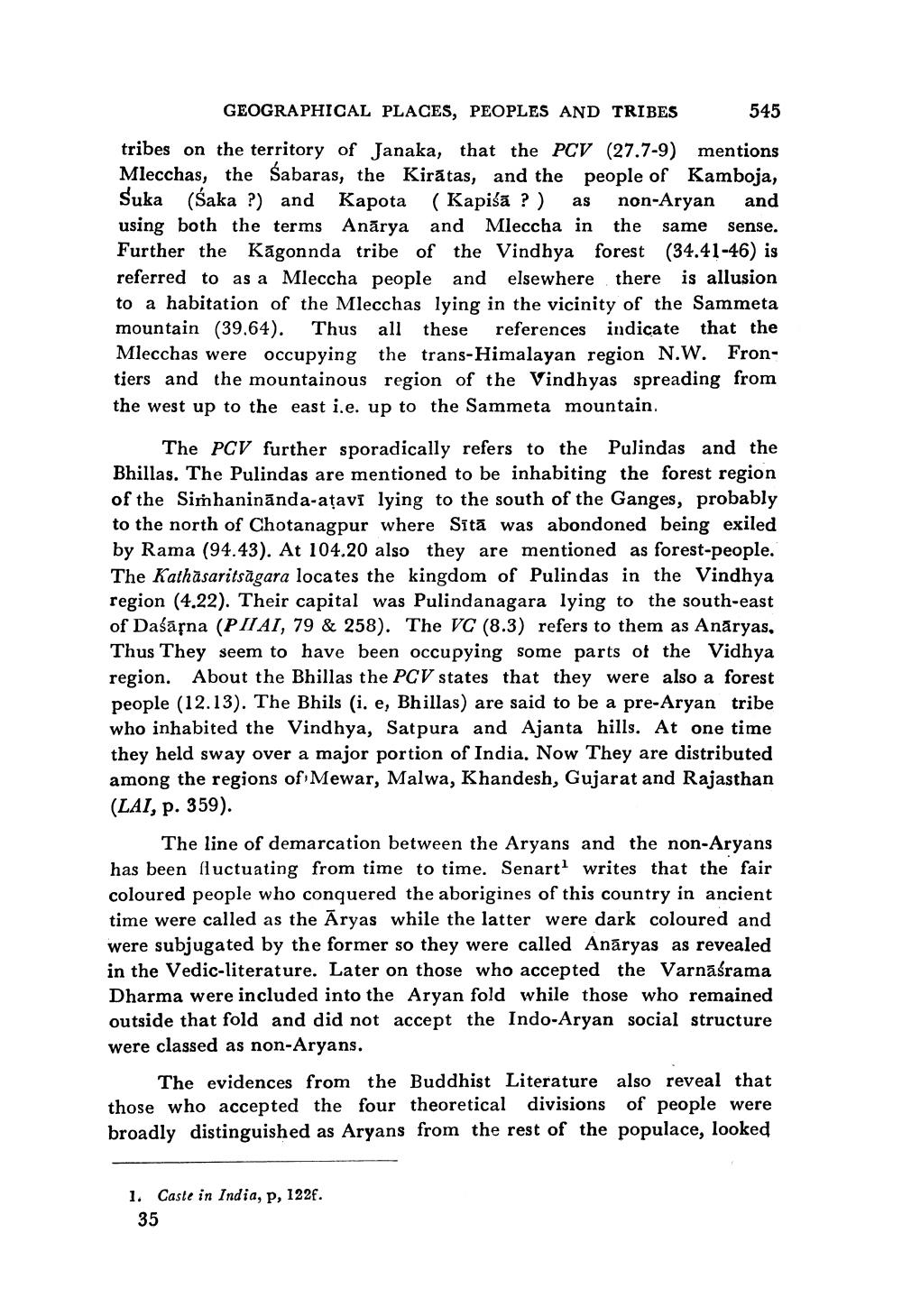________________
GEOGRAPHICAL PLACES, PEOPLES AND TRIBES
tribes on the territory of Janaka, that the PCV (27.7-9) mentions Mlecchas, the Sabaras, the Kiratas, and the people of Kamboja, Suka (Saka ?) and Kapota (Kapiśā ? ) as non-Aryan and using both the terms Anarya and Mleccha in the same sense. Further the Kagonnda tribe of the Vindhya forest (34.41-46) is referred to as a Mleccha people and elsewhere there is allusion to a habitation of the Mlecchas lying in the vicinity of the Sammeta mountain (39.64). Thus all these references indicate that the Mlecchas were occupying the trans-Himalayan region N.W. Frontiers and the mountainous region of the Vindhyas spreading from the west up to the east i.e. up to the Sammeta mountain.
The PCV further sporadically refers to the Pulindas and the Bhillas. The Pulindas are mentioned to be inhabiting the forest region of the Simhaninanda-ațavī lying to the south of the Ganges, probably to the north of Chotanagpur where Sita was abondoned being exiled by Rama (94.43). At 104.20 also they are mentioned as forest-people. The Kathasaritsagara locates the kingdom of Pulindas in the Vindhya region (4.22). Their capital was Pulindanagara lying to the south-east of Daśārna (PIIAI, 79 & 258). The VC (8.3) refers to them as Anāryas, Thus They seem to have been occupying some parts of the Vidhya region. About the Bhillas the PCV states that they were also a forest people (12.13). The Bhils (i. e, Bhillas) are said to be a pre-Aryan tribe who inhabited the Vindhya, Satpura and Ajanta hills. At one time they held sway over a major portion of India. Now They are distributed among the regions of Mewar, Malwa, Khandesh, Gujarat and Rajasthan (LAI, p. 359).
545
The line of demarcation between the Aryans and the non-Aryans has been fluctuating from time to time. Senart1 writes that the fair coloured people who conquered the aborigines of this country in ancient time were called as the Aryas while the latter were dark coloured and were subjugated by the former so they were called Anāryas as revealed in the Vedic-literature. Later on those who accepted the Varnasrama Dharma were included into the Aryan fold while those who remained outside that fold and did not accept the Indo-Aryan social structure were classed as non-Aryans.
The evidences from the Buddhist Literature also reveal that those who accepted the four theoretical divisions of people were broadly distinguished as Aryans from the rest of the populace, looked
1.
Caste in India, p, 122f.
35




